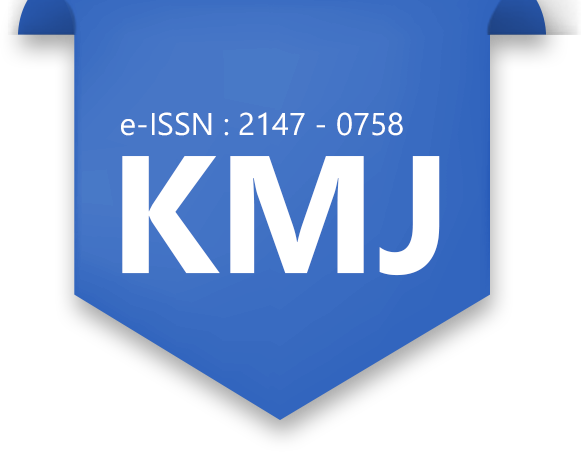
Effects of Different Resuscitation Fluids on Early Lung Ischaemia-Reperfusion Injury and Inflammatory Response: An Experimental Study
Adem Yüksel1, Metin Tilki2, Veli Melih Kara2, Ahmet Özer Sehirli3, Selvinaz Özkara41Department of Gastroenterological Surgery, Kocaeli Derince Training and Research Hospital, Kocaeli, Turkey2Department of General Surgery, Haydarpasa Numune Training and Research Hospital, Istanbul, Turkey
3Department of Pharmacology, Faculty of Dentistry, Near East University, Nicosia, Turkish Republic Of Northern Cyprus
4Department of Pathology, Haydarpasa Numune Training and Research Hospital, Istanbul, Turkey
INTRODUCTION: The study aimed to compare the effects of different resuscitation fluids (3% hypertonic saline vs lactated Ringer's solution vs a blood product) on early lung ischaemia-reperfusion injury and immune and inflammatory responses in a volume-controlled haemorrhagic shock model.
METHODS: Twenty-eight rats were divided into four groups. In the sham group (n: 7), right femoral vein exploration, vein cannulation, and observation were performed under anaesthesia. In the shock model groups, the femoral vein was cannulated. Of the calculated total blood volume, 30% was taken into a heparinized injector to induce the shock model in rats. Forty-five minutes later; the withdrawn blood was replaced by 10 ml/kg 3% hypertonic saline (n: 7), half of the removed blood (n: 7), and 33 ml/kg lactated Ringer solution (n: 7) in the HTS, blood product, and RL groups, respectively. Half of the total volume of the removed blood was reinfused in all of the shock-induced groups 20 minutes after the replacement. Rats were sacrificed in the fourth hour after the induction of haemorrhagic shock. For examinations; blood samples were collected from the abdominal aorta and tissue samples were collected from the terminal ileum and the right lung.
RESULTS: Lung tissue MDA and MPO levels were lower in the HTS group compared to other shock groups (MDA, p<0.05 vs the blood group and p <0.01 vs RL; MPO, p <0.05 vs the blood group and p<0.01 vs the RL group). Glutathione levels were higher in the HTS group compared to other shock groups (p <0.05 vs the blood group and p<0.01 vs the RL group). Of the proinflammatory cytokines, TNF-α and IL-1β serum levels were lower in the HTS group compared to the other groups. In the histopathological evaluation; lung and intestinal injury scores were lower in the group receiving HTS for replacement compared to the other shock groups.
DISCUSSION AND CONCLUSION: Fluid resuscitation with 3% hypertonic saline for the treatment of haemorrhagic shock reduces early-stage ischaemia-reperfusion injury and systemic inflammatory response in the lung compared to conventional approaches.
Hemorajik Şokta Farklı Resusitasyon Sıvılarının Erken Dönem Akciğer İskemi Reperfüzyon Hasarı ve İnflamatuvar Yanıt Üzerine Etkileri: Deneysel Çalışma
Adem Yüksel1, Metin Tilki2, Veli Melih Kara2, Ahmet Özer Sehirli3, Selvinaz Özkara41Kocaeli Derince Eğitim ve Araştırma Hastanesi, Gastroenteroloji Cerrahisi Kliniği, Kocaeli, Türkiye2Haydarpaşa Numune Eğitim ve Araştırma Hastanesi, Genel Cerrahi Kliniği, İstanbul, Türkiye
3Yakın Doğu Üniversitesi Diş Hekimliği Fakültesi, Farmakoloji Ana Bilim Dalı, Lefkoşa, Kuzey Kıbrıs Türk Cumhuriyeti
4Haydarpaşa Numune Eğitim ve Araştırma Hastanesi, Patoloji Kliniği, İstanbul, Türkiye
GİRİŞ ve AMAÇ: Volüm kontrollü hemorajik şok modelinde; kullanılan farklı resusitasyon sıvılarının (3% hipertonik salin vs ringer laktat vs kan ürünü) erken dönemde akciğer iskemi reperfüzyon hasarı, immun ve inflamatuvar yanıt üzerine etkilerinin karşılaştırılması amaçlandı.
YÖNTEM ve GEREÇLER: Yirmi sekiz adet rat 4 gruba ayrıldı. Sham grubunda (n: 7) sadece anestezi altında sağ femoral ven eksplorasyonu, damar kanülasyonu ve ardından gözlem yapıldı. Şok gruplarında ise femoral ven kanüle edildi. Hesaplanan total kan hacminin 30% u kadar kan heparinli enjektöre alınarak ratlarda şok tablosu oluşturuldu. Kırk beş dakika sonra HTS grubu (n: 7) 3% HTS ile 10 ml/kg dozunda, kan ile replasman grubu (n: 7) alınan kanın yarısıyla, ringer laktat grubu (n: 7) ise 33 ml/kg dozunda RL ile replase edildi. Replasmandan 20 dakika sonra tüm şok gruplarında alınan kanın yarısı reinfüze edildi. Hemorajik şok sonrası ratlar 4.saatte sakrifiye edildi. İncelemeler için abdominal aortadan kan örneği, terminal ileum ve sağ akciğerden doku örneği alındı.
BULGULAR: Akciğer dokusunda MDA ve MPO düzeyi, HTS grubunda diğer şok gruplarına göre daha düşük bulundu (MDA, p<0.05 kan grubuyla ve p<0.01vs RL grubuyla; MPO, p<0.05 kan grubuyla ve p<0.01 RL grubuyla). Glutatyon (GSH) düzeyi ise HTS grubunda diğer şok gruplarına göre daha yüksekti (p<0.05 kan grubuyla ve p<0.01 RL grubuyla). Proinflamatuvar sitokinlerden TNF-α ve IL-1β serum düzeyi, HTS grubunda daha düşük olarak bulundu. Histopatolojik değerlendirmede; HTS ile replasman uygulanan grupta, akciğer ve bağırsak hasar skoru diğer şok gruplarına göre daha düşük bulundu.
TARTIŞMA ve SONUÇ: Hemorajik şok tedavisinde, HTS (3%) ile sıvı resusitasyonu; konvansiyonel yaklaşımlara göre akciğerde erken dönem iskemi reperfüzyon hasarını ve sistemik inflamatuvar yanıtı azaltır.
Manuscript Language: English












